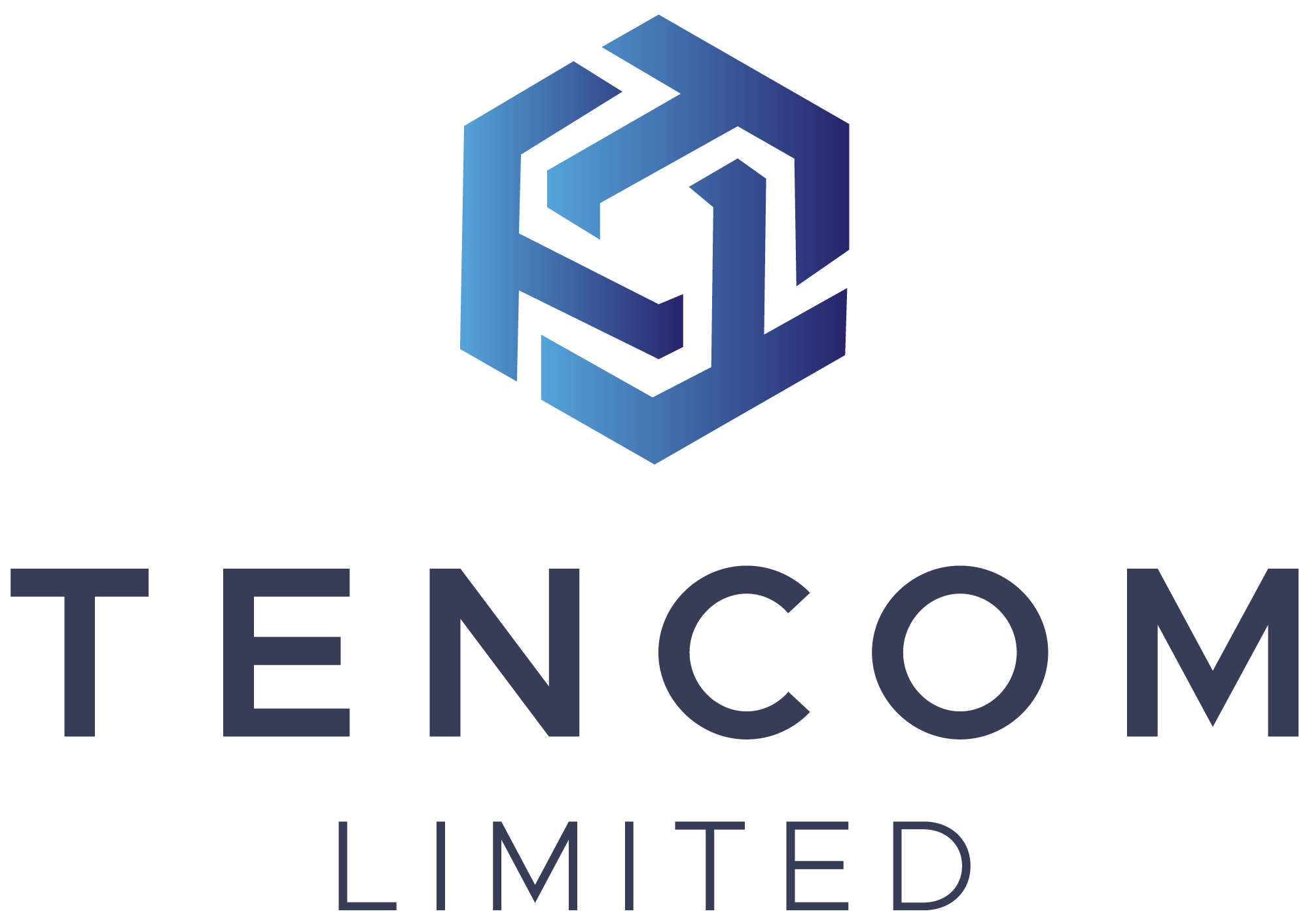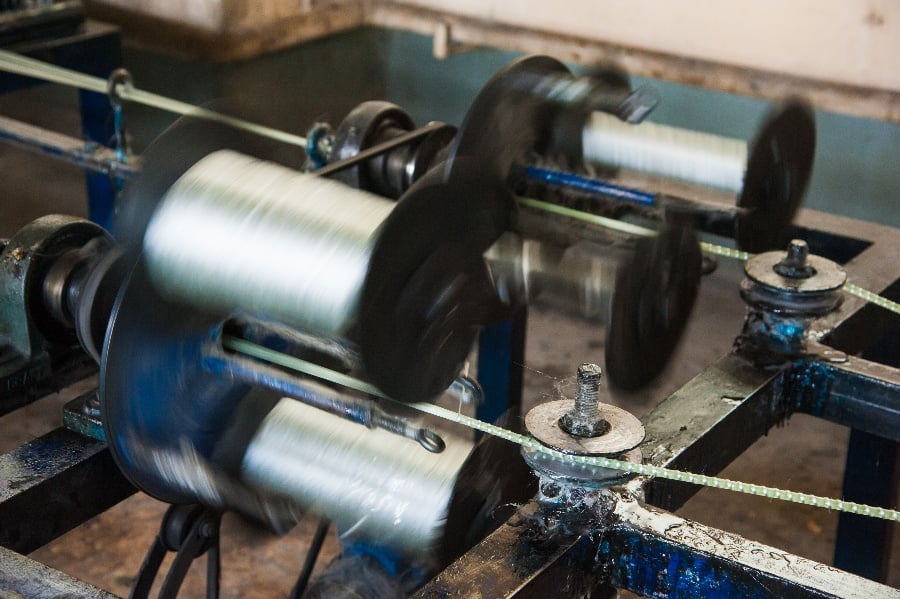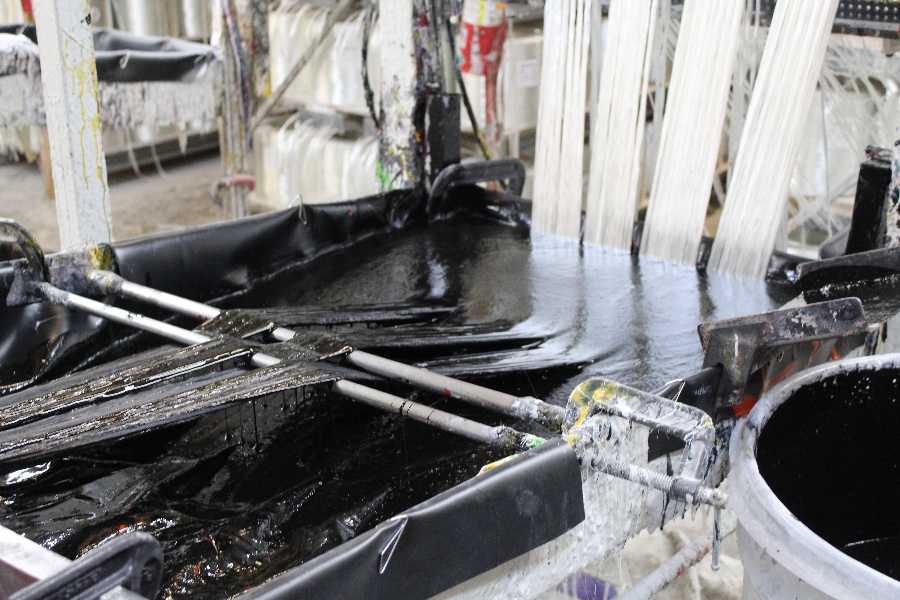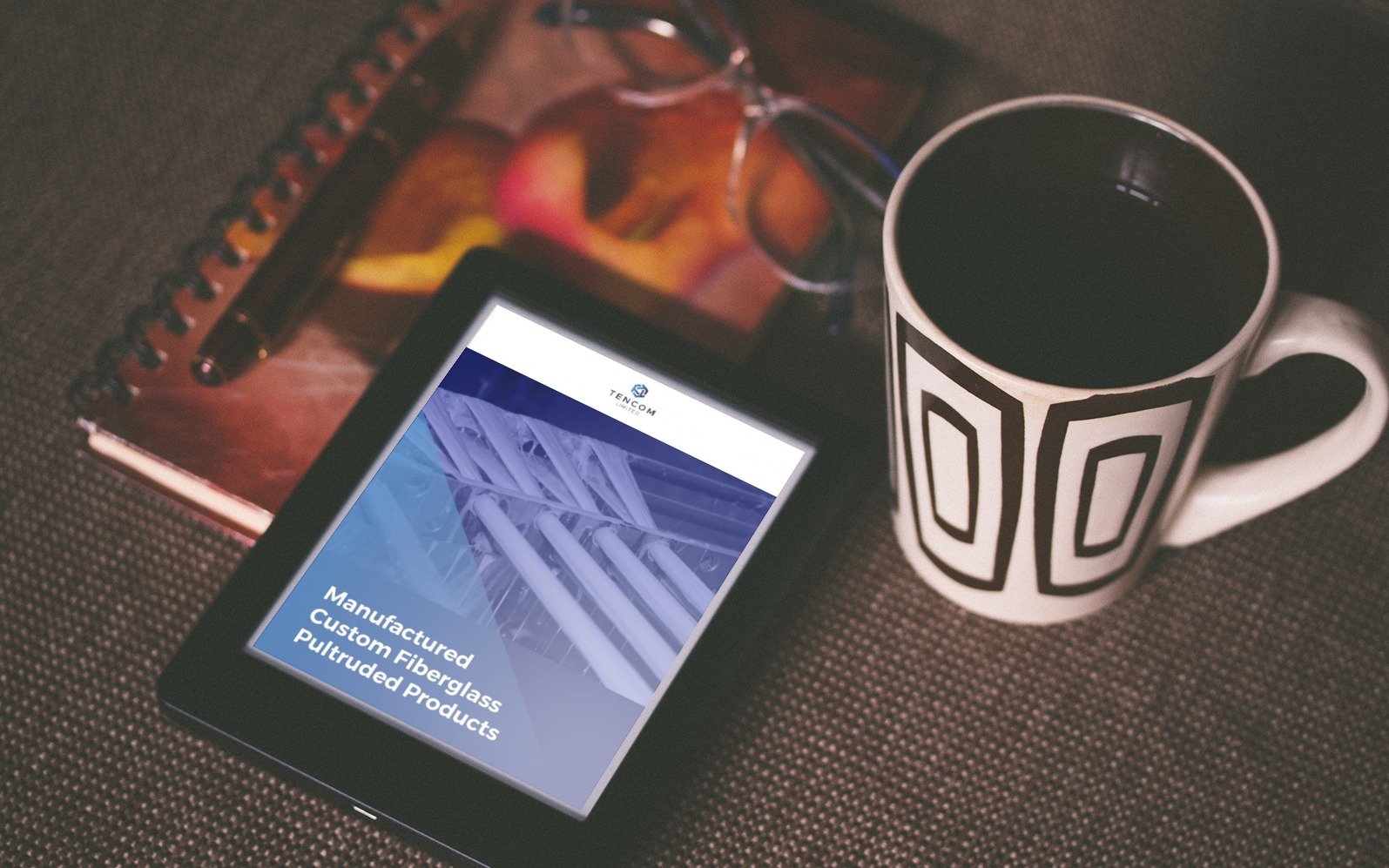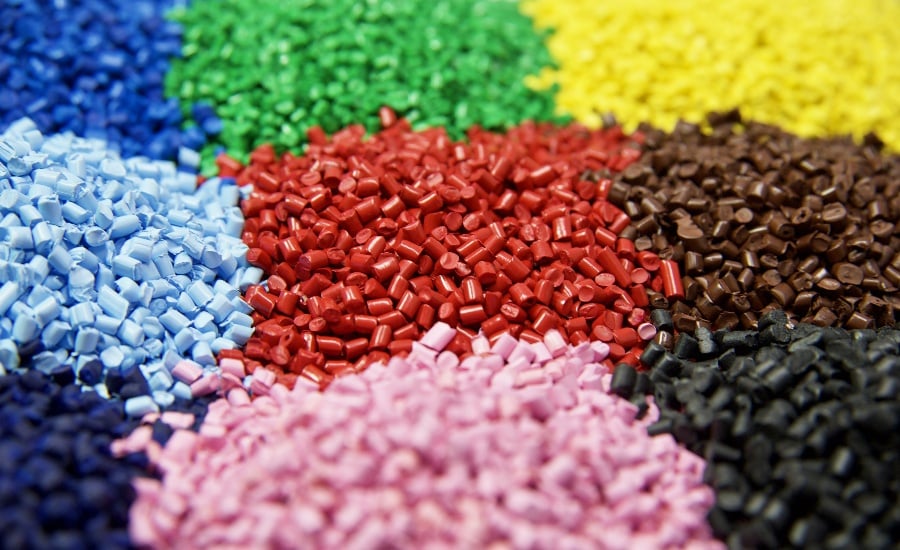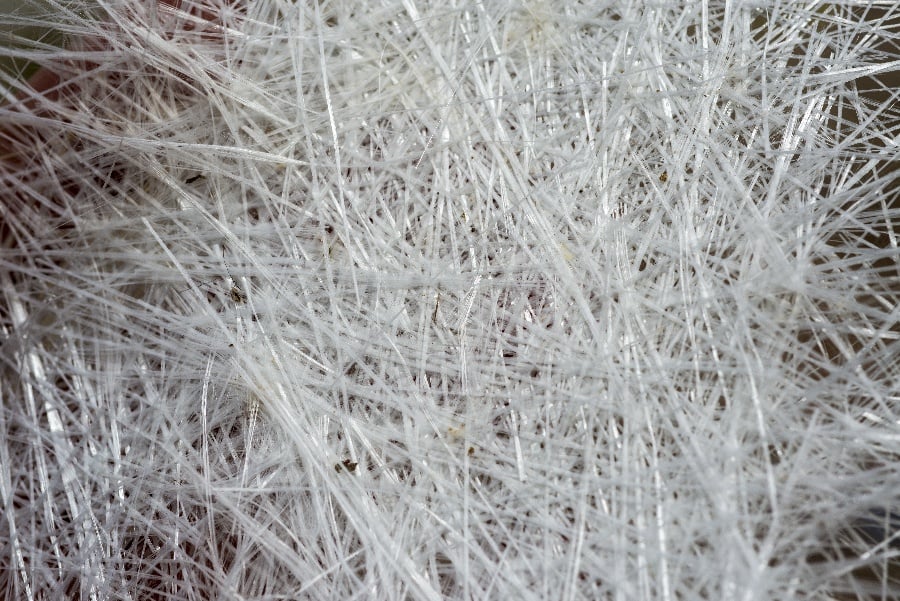
Pultruded fiberglass, a composite material formed through a continuous manufacturing process, is renowned for its strength, lightweight nature, and corrosion resistance. Its ability to meet stringent industry standards makes it a trusted choice across sectors like construction, infrastructure, marine, and electrical applications. By adhering to recognized standards, pultruded fiberglass ensures reliability, safety, and performance in demanding environments.
Below, we examine how pultruded fiberglass meets key industry standards and why this is important for your projects.
Understanding Pultrusion and Its Quality Control
Pultrusion involves pulling fiberglass reinforcements (such as rovings or mats) through a resin bath and a heated die to create consistent profiles like beams, rods, or grating. This automated process allows for precise control over material composition, ensuring uniformity and high quality.
Manufacturers like Tencom prioritize rigorous testing and quality assurance to meet industry standards, as outlined in their overview of the pultrusion process.
Key Industry Standards for Pultruded Fiberglass
Pultruded fiberglass is designed to comply with standards set by organizations like ASTM International, the International Organization for Standardization (ISO), and Underwriters Laboratories (UL). These standards cover mechanical properties, fire resistance, electrical performance, and environmental durability, ensuring the material performs reliably in real-world applications.
1. ASTM Standards for Mechanical and Structural Performance
ASTM International provides a range of standards that pultruded fiberglass must meet to ensure structural integrity:
-
ASTM D638: Tests tensile strength and elongation, confirming that pultruded profiles can withstand significant loads without deforming. This is critical for applications like bridge decking or structural beams.
-
ASTM D790: Evaluates flexural strength, ensuring components like railings or supports can resist bending under stress.
-
ASTM D2344: Measures interlaminate shear strength (shear strength between fibers or layers), important for profiles used in high-stress environments like industrial platforms.
By meeting these standards, pultruded fiberglass ensures consistent mechanical performance, providing engineers and architects with confidence in its use for structural applications.
Tencom’s commitment to these standards is evident in their custom pultrusion solutions, which are tailored to meet specific project requirements.
2. Fire and Safety Standards
Fire safety is a critical concern in industries like construction, transportation, and public infrastructure. Pultruded fiberglass can be manufactured with fire-retardant resins to comply with standards such as:
-
ASTM E84: Measures flame spread and smoke development, ensuring pultruded components are safe for use in buildings, tunnels, or transit systems. Low flame spread ratings make fiberglass ideal for public spaces.
-
UL 94: Evaluates the flammability of plastic composites, confirming that pultruded products resist ignition and combustion in electrical or industrial settings.
These standards ensure that pultruded fiberglass enhances safety by minimizing fire risks, particularly in high-traffic or hazardous environments.
3. Electrical and Environmental Standards
Pultruded fiberglass’s non-conductive and corrosion-resistant properties make it ideal for electrical and harsh environmental applications. Relevant standards include:
-
ASTM D149: Tests dielectric strength, ensuring fiberglass profiles are safe for use in electrical enclosures, utility poles, or rail systems where conductivity could pose a hazard.
-
ASTM D543: Assesses chemical resistance, confirming that pultruded components can withstand exposure to acids, salts, or other corrosive substances in marine or chemical plant settings.
These properties make pultruded fiberglass a reliable choice for applications requiring long-term durability in challenging conditions.
4. ISO Standards for Quality Management
Many pultrusion manufacturers adhere to ISO 9001, a standard for quality management systems. This ensures consistent production processes, thorough documentation, and continuous improvement.
Compliance with ISO 9001 demonstrates the desire to deliver high-quality products and meet customer expectations, as highlighted by Tencom’s focus on quality-driven pultrusion manufacturing.
Why Compliance Matters for Your Projects
Meeting industry standards is more than a regulatory requirement—it’s a guarantee of performance, safety, and longevity. Here’s why compliance with these standards is critical:
-
Reliability: Standards ensure pultruded fiberglass performs consistently under specified conditions, reducing the risk of failures in structural or safety-critical applications.
-
Safety: Compliance with fire, electrical, and mechanical standards minimizes hazards for workers, end-users, and the public.
-
Cost Savings: Durable, low-maintenance materials that meet standards reduce long-term repair or replacement costs.
-
Regulatory Approval: Compliance with standards simplifies project approvals and inspections, ensuring your project meets local or international codes.
How Manufacturers Ensure Compliance
Reputable pultrusion manufacturers implement robust processes to meet industry standards:
-
Material Testing: Conducting in-house or third-party tests to verify mechanical, fire and electrical properties.
- Quality Assurance Systems: monitoring raw materials, procedures, and process conditions that make the final products defect-free.
-
Quality Control Systems: Using automated monitoring during production to maintain consistency and detect defects.
-
Certifications: Obtaining certifications like ISO 9001 or UL listings to validate compliance.
-
Custom Formulations: Adjusting resin systems or fiber content to meet specific standards for unique applications.
By partnering with a manufacturer that prioritizes standards compliance, you can trust that your pultruded fiberglass products will deliver exceptional performance.
Choosing Pultruded Fiberglass for Your Next Project
Pultruded fiberglass’s ability to meet ASTM, UL, ISO, and other industry standards makes it a versatile and reliable material for projects requiring strength, safety, and durability. Whether you’re designing a pedestrian bridge, an electrical enclosure, or a chemical-resistant platform, pultruded fiberglass offers peace of mind through proven performance.
At Tencom, we provide high-quality pultruded fiberglass products engineered to meet the strictest industry standards. Contact us today to learn how our solutions can support your project’s success.
